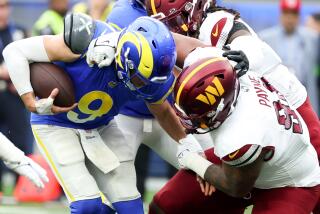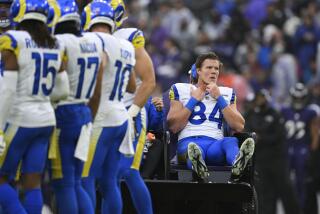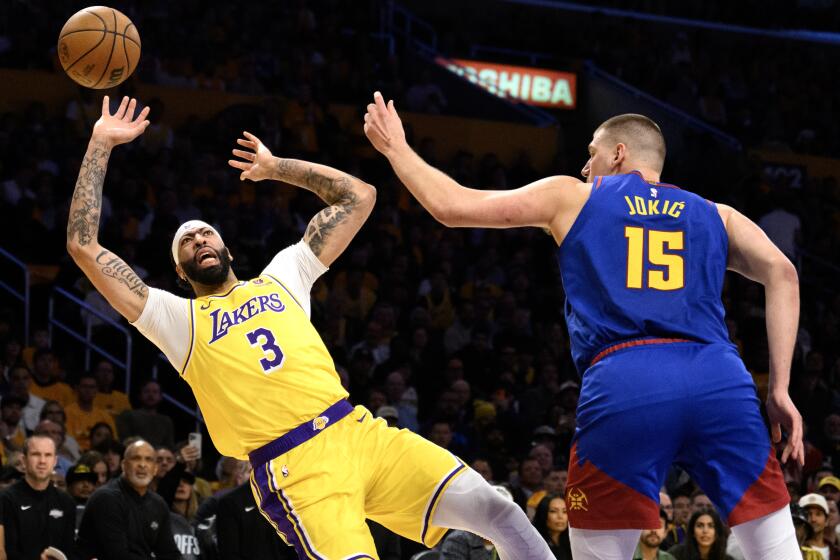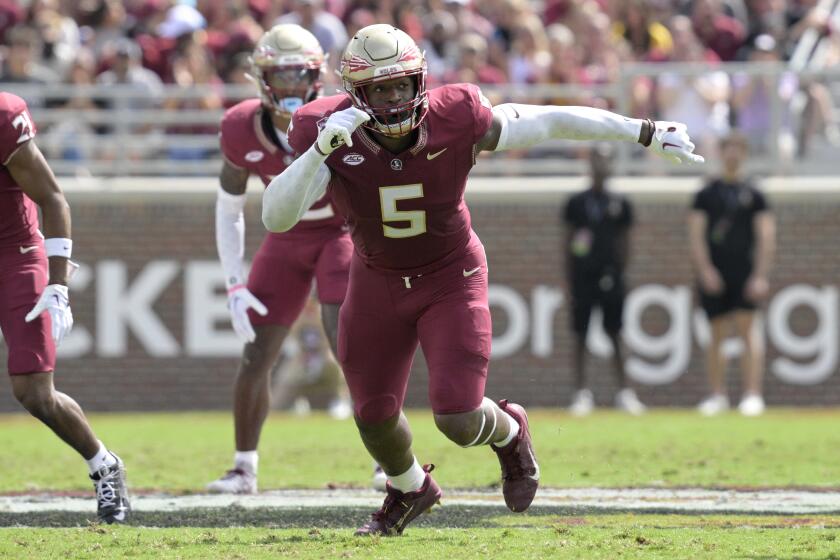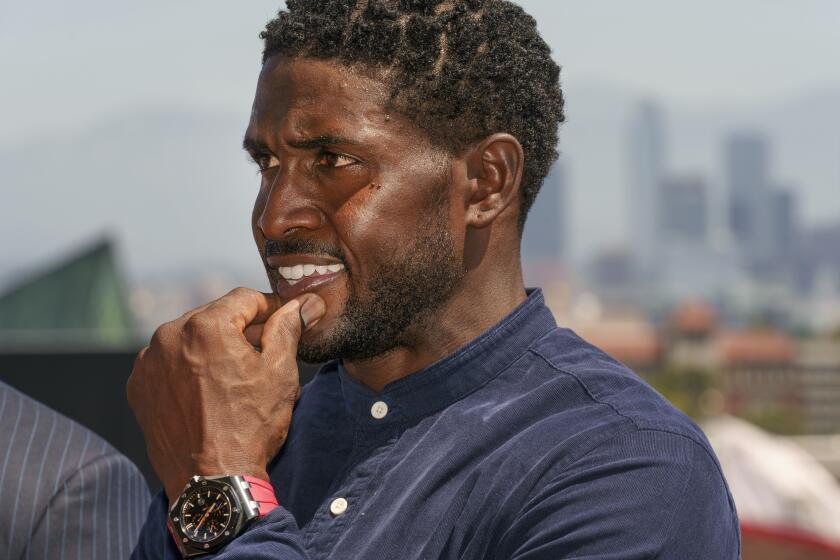Robert Griffin III needs more tests on his knee
WASHINGTON — The season is over for the Washington Redskins, but the controversy continued to boil Monday over Coach Mike Shanahan’s decision to keep rookie quarterback Robert Griffin III in a playoff game against Seattle despite an obviously weakened right knee that ultimately buckled.
An MRI exam performed on the knee Monday proved inconclusive because of a previous anterior cruciate ligament tear Griffin suffered in college. He is scheduled to travel Tuesday to see renowned orthopedic surgeon James Andrews for more examinations.
According to the Washington Post, Griffin and Redskins owner Daniel Snyder will travel to Pensacola, Fla., where the quarterback will be examined by Andrews. The newspaper also says initial MRIs suggest Griffin sustained at least partial tears to his ACL and lateral collateral ligament.
Griffin was not in the Redskins’ locker room during media access Monday, but he turned to Twitter to defend his remaining in the 24-14 defeat: “Many may question, criticize & think they have all the right answers. But few have been in the line of fire in battle.”
Like an option quarterback pitching the football, Shanahan pitched the responsibility for the decision — or at least a good part of it — to his quarterback and Andrews, who was on the Redskins’ sideline. The coach said he was too engrossed in the intricacies of the game to make that call himself.
Griffin sat out a game in December because of a sprained LCL in his right knee. He returned for the final two games of the regular season and wore a large brace on the knee. Sunday, he aggravated the injury on a pass in the first quarter.
“I didn’t get hit, I just planted it wrong,” Griffin said after the game, referring to the first-quarter tweak. “My knee kind of buckled on me and scared me a little bit, so I went to the sideline and got a tape job done on the knee. I was fine after that until the very end of the game, so that was it.”
Griffin didn’t look fine, however, and was far from the incredibly mobile quarterback he was before the knee problems. He ran a keeper to his left in the second half, and though he gained nine yards, he was half-skipping as he ran, obviously favoring his knee.
“[Shanahan] asked me to try to see if I could run, so I did and got nine yards,” he said. “I think that’s a positive in anybody’s playbook.”
Rather than replacing him with backup Kirk Cousins, Shanahan kept him in the game.
“Robert said to me, ‘Coach, there’s a difference between being injured and being hurt. I guarantee you I’m hurting right now. Give me a chance in this football game, because I guarantee you I’m not injured,’” Shanahan said. “That was enough for me. I thought he did enough for us this year to have the opportunity to stay in the football game. It was a tough decision, when to pull a guy and when not to.”
The situation underscores an inherent conflict in a league that says it’s concerned about the health and safety of players, and not just to keep them on the field for big games. Players will not pull themselves out of games if they are hurting — in fact, some lie about how they feel to continue playing — and the win-at-all-costs mentality dissuades coaches from making prudent choices.
“When a guy says, ‘I can go,’” Shanahan said, “You have to make one of those decisions of what is in the best interest of the football team to give yourself a chance to win.”
Griffin wasn’t the only player to sustain a knee injury during Sunday’s game. So did Seattle defensive end Chris Clemons, who suffered a torn ACL. Monday, Seahawks Coach Pete Carroll blamed the splotchy condition of the grass at FedEx Field, calling the Redskins’ playing surface “horrible” and calling for higher standards to be enforced.
“It was horrible,” Carroll said on his weekly radio show. “It’s a horrible field. It’s as bad as a field can get for being dry. And it’s too bad, it’s really too bad. And we deserve better.”
Said a subdued Griffin when asked about the turf, perhaps shrugging off the irony that he was injured when, untouched, he lost his footing on that very grass: “It’s just part of our home-field advantage.”
Twitter: @LATimesFarmer
More to Read
Get our high school sports newsletter
Prep Rally is devoted to the SoCal high school sports experience, bringing you scores, stories and a behind-the-scenes look at what makes prep sports so popular.
You may occasionally receive promotional content from the Los Angeles Times.

